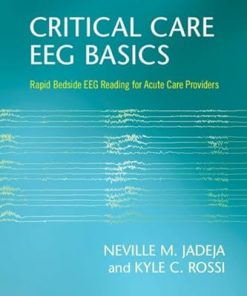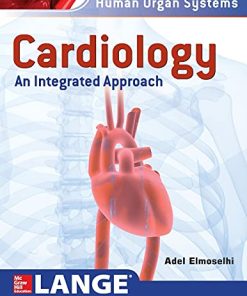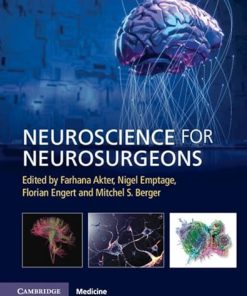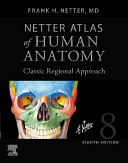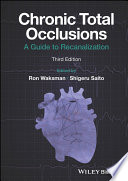(Ebook PDF) BIOREFINERY OF INORGANICS 1st edition by Erik Meers full chapters 978-1118921456
$50.00 Original price was: $50.00.$25.00Current price is: $25.00.
BIOREFINERY OF INORGANICS 1st edition by Erik Meers – Ebook PDF Instant Download/DeliveryISBN: 978-1118921456
Full dowload BIOREFINERY OF INORGANICS 1st edition after payment.
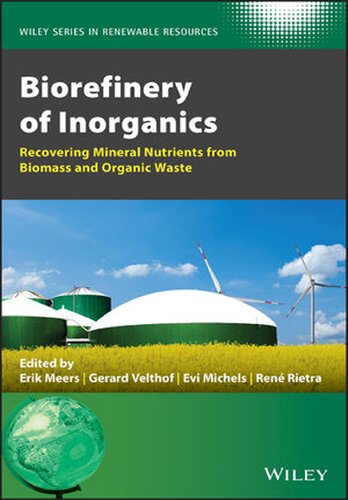
Product details:
ISBN-13 : 978-1118921456
Author: Erik Meers
This book presents a comprehensive overview of the potential for mineral recovery from wastes, addressing technological issues as well as economic, ecological, and agronomic full-scale field assessments. It serves as a complete reference work for experts in the field and provides teaching material for future experts specializing in environmental technology sectors.
Biorefinery of Inorganics: Recovering Mineral Nutrients from Biomass and Organic Waste starts by explaining the concept of using anaerobic digestion as a biorefinery for production of an energy carrier in addition to mineral secondary resources. It then discusses the current state of mineral fertilizer use throughout the world, offering readers a complete look at the resource availability and energy intensity. Technical aspects of mineral recovery organic (waste-)streams is discussed next, followed by an examination of the economics of biobased products and their mineral counterparts. The book also covers the environmental impact assessment of the production and use of bio-based fertilizers; modelling and optimization of nutrient recovery from wastes; and more.
BIOREFINERY OF INORGANICS 1st Table of contents:
Section I Global Nutrient Flows and Cycling in Food Systems 1
1 Global Nutrient Flows and Cycling in Food Systems 3
Qian Liu, Jingmeng Wang, Yong Hou, Kimo van Dijk, Wei Qin, Jan Peter Lesschen, Gerard Velthof, and Oene Oenema
1.1 Introduction 3
1.2 Primary and Secondary Driving Forces of Nutrient Cycling 4
1.3 Anthropogenic Influences on Nutrient Cycling 6
1.4 The Global Nitrogen Cycle 7
1.5 The Global Phosphorus Cycle 9
1.6 Changes in Fertilizer Use During the Last 50Years 12
1.7 Changes in Harvested Crop Products and in Crop Residues During the Last 50Years 14
1.8 Changes in the Amounts of N and P in Animal Products and Manures 15
1.9 Changes in the Trade of Food and Feed 16
1.10 Changes in Nutrient Balances 16
1.11 General Discussion 17
References 20
Section II The Role of Policy Frameworks in the Transition Toward Nutrient Recycling 23
2.1 Toward a Framework that Stimulates Mineral Recovery in Europe 25
Nicolas De La Vega and Gregory Reuland
2.1.1 The Importance of Managing Organic Residues 25
2.1.2 The Rise of Nutrient and Carbon Recycling 26
2.1.3 The European Framework for Nutrient Recovery and Reuse (NRR) 27
2.1.4 EU Waste Legislation 27
2.1.5 Moving from Waste to Product Legislation and the Interplay with Other EU Legislation 29
2.1.6 Complying with Existing Environmental and Health & Safety Legislation 30
2.1.7 Conclusion 32
References 32
2.2 Livestock Nutrient Management Policy Framework in the United States 33
Georgine Yorgey and Chad Kruger
2.2.1 Introduction 33
2.2.2 The Legal-Regulatory Framework for Manure Nutrient Management 34
2.2.3 Current Manure-Management Practices 35
2.2.4 Public Investments for Improvement of Manure-Management Practices 36
2.2.5 The Role of the Judicial Process and Consumer-Driven Preferences 37
2.2.6 Limitations of the Current Framework 38
2.2.7 Conclusion 39
References 40
2.3 Biomass Nutrient Management in China: The Impact of Rapid Growth and Energy Demand 43
Paul Thiers
2.3.1 Introduction 43
2.3.2 The Impact of Economic Liberalization Policy in the 1980s and 1990s 43
2.3.3 Environmental Protection Efforts and Unintended Consequences 44
2.3.4 Renewable Energy Policy and Its Impact on Biomass Management 46
2.3.5 Conclusion 49
References 50
2.4 Nutrient Cycling in Agriculture in China 53
Lin Ma, Yong Hou, and Zhaohai Bai
2.4.1 Introduction 53
2.4.2 Nutrient Cycling in China 54
2.4.3 Effects on the Environment 55
2.4.4 Nutrient Management Policies 57
2.4.5 Future Perspectives 59
2.4.5.1 National Nutrient Management Strategy 59
2.4.5.2 Challenges of Technology Transfer in Manure Management 59
2.4.5.3 Environmental Protection 60
2.4.6 Conclusion 61
References 63
Section III State of the Art and Emerging Technologies in Nutrient Recovery from Organic Residues 65
3.1 Manure as a Resource for Energy and Nutrients 67
Ivona Sigurnjak, Reinhart Van Poucke, Céline Vaneeckhaute, Evi Michels, and Erik Meers
3.1.1 Introduction 67
3.1.2 Energy Production from Animal Manure 68
3.1.2.1 Anaerobic Digestion 71
3.1.2.2 Thermochemical Conversion Process 73
3.1.3 Nutrient Recovery Techniques 76
3.1.3.1 Phosphorus Precipitation 77
3.1.3.2 Ammonia Stripping and Scrubbing 77
3.1.3.3 Membrane Filtration 78
3.1.3.4 Phosphorus Extraction from Ashes 79
3.1.4 Conclusion 79
References 79
3.2 Municipal Wastewater as a Source for Phosphorus 83
Aleksandra Bogdan, Ana Alejandra Robles Aguilar, Evi Michels, and Erik Meers
3.2.1 Introduction 83
3.2.2 Phosphorus Removal from Wastewater 84
3.2.3 Sludge Management 84
3.2.4 Current State of P Recovery Technologies 85
3.2.4.1 Phosphorus Salts Precipitation 85
3.2.4.2 Phosphorus Recovery Via Wet-Chemical Processes 87
3.2.4.3 Phosphorus Recovery Via Thermal Processes 88
3.2.4.4 Choice of Phosphorus Technologies Today 89
3.2.5 Future P Recovery Technologies 90
3.2.5.1 Phosphorus Salt Recovery Upgrades 90
3.2.5.2 Thermal Processes 91
3.2.5.3 Natural Process for the Recovery of Phosphorus 91
3.2.6 Conclusion 92
References 92
3.3 Ammonia Stripping and Scrubbing for Mineral Nitrogen Recovery 95
Claudio Brienza, Ivona Sigurnjak, Evi Michels, and Erik Meers
3.3.1 Introduction 95
3.3.2 Ammonia Stripping and Scrubbing from Biobased Resources 96
3.3.2.1 Acid Scrubbing of Exhaust Air 97
3.3.2.2 Stripping and Scrubbing from Manure 97
3.3.2.3 Stripping and Scrubbing from Anaerobic Digestate 97
3.3.2.4 Manure and Digestate Processing by Evaporation 98
3.3.3 Alternative Scrubbing Agents 98
3.3.3.1 Organic Acids 98
3.3.3.2 Nitric Acid 98
3.3.3.3 Gypsum 99
3.3.4 Industrial Cases of Stripping and Scrubbing 99
3.3.4.1 Waste Air Cleaning Via Acid Scrubbing 99
3.3.4.2 Raw Digestate Processing Via Stripping and Scrubbing and Recirculation of the N-Depleted Digestate 99
3.3.4.3 Liquid Fraction Digestate Processing Via Stripping and Scrubbing 100
3.3.4.4 Liquid Fraction of Digestate Processing Via Membrane Separation and Stripping and Scrubbing 100
3.3.5 Product Quality of Ammonium Sulfate and Ammonium Nitrate 100
3.3.5.1 Ammonium Sulfate 101
3.3.5.2 Ammonium Nitrate 102
3.3.6 Conclusion 102
References 103
Section IV Inspiring Cases in Nutrient Recovery Processes 107
4.1 Struvite Recovery from Domestic Wastewater 109
Adrien Marchi, Sam Geerts, Bart Saerens, Marjoleine Weemaes, Lies De Clercq, and Erik Meers
4.1.1 Introduction 109
4.1.2 Process Description 110
4.1.3 Analyses and Tests 111
4.1.3.1 Mass Balance 111
4.1.3.2 Struvite Purity 112
4.1.4 Operational Benefits 114
4.1.4.1 Enhanced Dewaterability 114
4.1.4.2 Enhanced Recovery Potential 115
4.1.4.3 Reduced Scaling 115
4.1.4.4 Reduced Phosphorus Content in the Sludge Pellets 116
4.1.4.5 Reduced P and N Load in the Rejection Water 116
4.1.5 Economic Evaluation 116
4.1.6 Future Challenges 117
4.1.6.1 In-Depth Quality Screening 117
4.1.6.2 Improved Crystal Separation 117
4.1.7 Conclusion 118
References 118
4.2 Mineral Concentrates from Membrane Filtration 121
Paul Hoeksma and Fridtjof de Buisonjé
4.2.1 Introduction 121
4.2.2 Production of Mineral Concentrates 121
4.2.2.1 General Set-up 121
4.2.2.2 Solid/Liquid Separation 122
4.2.2.3 Pre-treatment of the Liquid Fraction (Effluent from Mechanical Separation) 123
4.2.2.4 Reverse Osmosis 123
4.2.2.4.1 Full-Scale Pilot Production Plants 124
4.2.3 Mass Balance 124
4.2.4 Composition of Raw Slurry, Solid Fraction, and RO-Concentrate 125
4.2.4.1 Raw Slurry 125
4.2.4.2 Solid Fraction 128
4.2.4.3 RO-Concentrate 128
4.2.4.3.1 Nutrients and Minerals 128
4.2.4.3.2 Secondary Nutrients and Trace Elements 129
4.2.4.3.3 Inorganic Microcontaminants 129
4.2.4.3.4 Organic Microcontaminants 129
4.2.4.3.5 Volatile Fatty Acids 129
4.2.5 Quality Requirements 129
4.2.6 Conclusion 130
References 130
4.3 Pyrolysis of Agro-Digestate: Nutrient Distribution 133
Evert Leijenhorst
4.3.1 Introduction 133
4.3.1.1 Background 133
4.3.1.2 The Pyrolysis Process 133
4.3.1.3 Pyrolysis of Agro-Digestate 134
4.3.2 Investigation 135
4.3.2.1 Materials and Methods 135
4.3.2.2 Product Analysis and Evaluation 136
4.3.3 Results and Discussion 138
4.3.3.1 Fast Pyrolysis: Influence of Temperature 138
4.3.3.1.1 Product Distribution 138
4.3.3.1.2 Nutrient Recovery 138
4.3.3.1.3 Product Composition 142
4.3.3.2 Influence of Heating Rate 143
4.3.3.2.1 Product Distribution 143
4.3.3.2.2 Nutrient Recovery 143
4.3.4 Conclusion 143
Acknowledgment 145
References 146
4.4 Agronomic Effectivity of Hydrated Poultry Litter Ash 147
Phillip Ehlert
4.4.1 Introduction 147
4.4.2 Energy Production Process 147
4.4.3 Composition of HPLA 149
4.4.4 Agronomic Effectivity of HPLA 149
4.4.5 Phosphorus 152
4.4.6 Potassium 154
4.4.7 Rye Grass 155
4.4.8 Acid-Neutralizing Value 157
4.4.9 Efficacy 157
4.4.10 Conclusion 158
References 159
4.5 Bioregenerative Nutrient Recovery from Human Urine: Closing the Loop in Turning Waste intoWealth 161
Jayanta Kumar Biswas, Sukanta Rana, and Erik Meers
4.5.1 Introduction 161
4.5.2 Composition and Fertilizer Potential 162
4.5.3 State of the Art of Regenerative Practices 162
4.5.3.1 HU in Agriculture 162
4.5.3.2 HU in Aquaculture 164
4.5.4 Cautions, Concerns, and Constraints 168
4.5.5 Conclusion 171
References 172
4.6 Pilot-Scale Investigations on Phosphorus Recovery from Municipal Wastewater 177
Marie-Edith Ploteau, Daniel Klein, Johan te Marvelde, Luc Sijstermans, Anders Nättorp, Marie-Line Daumer, Hervé Paillard, Cédric Mébarki, Ania Escudero, Ole Pahl, Karl-Georg Schmelz, and Frank Zepke
4.6.1 Introduction 177
4.6.2 European and National Incentives to Act on Market Drivers 178
4.6.3 Pilot Investigations 179
4.6.3.1 Acid Leaching Solutions to Recover Phosphorus from Sewage Sludge Ashes 179
4.6.3.2 Pilot Demonstration of Thermal Solutions to Recover Phosphorus from Sewage Sludge: The EuPhoRe® Process 180
4.6.3.3 Demonstration of struvite solution with biological acidification to increase the P recovery from sewage sludge 182
4.6.3.4 Innovative Technical Solutions to Recover P from Small-Scale WWTPs: Downscaling Struvite Precipitation for Rural Areas 182
4.6.3.5 Algal-Based Solutions to Recover Phosphorus from Small-Scale WWTPs: A Promising Approach for Remote, Rural, and Island Areas 184
References 186
Section V Agricultural and Environmental Performance of Biobased Fertilizer Substitutes: Overview of Field Assessments 189
5.1 Fertilizer Replacement Value: Linking Organic Residues to Mineral Fertilizers 191
René Schils, Jaap Schröder, and Gerard Velthof
5.1.1 Introduction 191
5.1.2 Nutrient Pathways from Land Application to Crop Uptake 192
5.1.2.1 Nitrogen 195
5.1.2.2 Phosphorus 197
5.1.3 Fertilizer Replacement Value 198
5.1.3.1 Crop Response 202
5.1.3.2 Response Period 202
5.1.4 Reference Mineral Fertilizer 202
5.1.4.1 Crop and Soil Type 202
5.1.4.2 Application Time and Method 202
5.1.4.3 Assessment Method 203
5.1.5 Fertilizer Replacement Values in Fertilizer Plans 204
5.1.6 Conclusion 205
References 212
5.2 Anaerobic Digestion and Renewable Fertilizers: Case Studies in Northern Italy 215
Fabrizio Adani, Giuliana D’Imporzano, Fulvia Tambone, Carlo Riva, Gabriele Boccasile, and Valentina Orzi
5.2.1 Introduction 215
5.2.2 Anaerobic Digestion as a Tool to Correctly Manage Animal Slurries 216
5.2.3 Chemical and Physical Modification of Organic Matter and Nutrients during Anaerobic Digestion 218
5.2.4 From Digestate to Renewable Fertilizers 220
5.2.4.1 N-Fertilizer from the LF of Digestate 220
5.2.4.2 Organic Fertilizer from the SF of Digestate 223
5.2.5 Environmental Safety and Health Protection Using Digestate 224
5.2.6 Conclusion 227
References 227
5.3 Nutrients and Plant Hormones in Anaerobic Digestates: Characterization and Land Application 231
Shubiao Wu and Renjie Dong
5.3.1 Introduction 231
5.3.2 Nutrient Characterization in Anaerobic Digested Slurry 233
5.3.2.1 N, P, and K Contents 233
5.3.2.2 Bioactive Substances 236
5.3.3 Use of Digestates as Fertilizers for Plant Growth 237
5.3.4 Effect of Digestate on Seed Germination 238
5.3.5 Positive Effects of Digestates on Soil 238
5.3.5.1 Effects on Nutrient Properties 238
5.3.5.2 Effects on Microbial Activity 239
5.3.5.3 Potential Negative Effects 240
5.3.6 Conclusion 243
References 243
5.4 Enhancing Nutrient Use and Recovery from Sewage Sludge to Meet Crop Requirements 247
Ruben Sakrabani
5.4.1 Trends in Sewage Sludge Management in Agriculture 247
5.4.2 Organomineral Fertilizer Use in Case Studies 249
5.4.3 Case Study 1: Field Trial Using OMF (Broxton) 250
5.4.4 Case Study 2: Field Trial Using OMF (Silsoe) 252
5.4.5 Conclusion 255
Acknowledgments 255
References 255
5.5 Application of Mineral Concentrates from Processed Manure 259
Gerard Velthof, Phillip Ehlert, Jaap Schröder, Jantine van Middelkoop, Wim van Geel, and Gerard Holshof
5.5.1 Introduction 259
5.5.2 Product Characterization 260
5.5.3 Agronomic Response 261
5.5.3.1 Pot Experiments 261
5.5.3.2 Field Experiments 262
5.5.4 Risk of Nitrogen Losses 263
5.5.4.1 Ammonia Emission 263
5.5.4.2 Nitrous Oxide Emission 264
5.5.4.3 Nitrate Leaching 266
5.5.5 Conclusion 267
References 267
5.6 Liquid Fraction of Digestate and Air Scrubber Water as Sources for Mineral N 271
Ivona Sigurnjak, Evi Michels, and Erik Meers
5.6.1 Introduction 271
5.6.2 Materials and Methods 272
5.6.2.1 Experimental Design 272
5.6.2.2 Fertilizer Sampling 274
5.6.2.3 Plant and Soil Sampling 275
5.6.2.4 Statistical Analysis 275
5.6.2.5 Nitrogen Use Efficiency 276
5.6.3 Impact of Fertilization Strategies on Crop Production 276
5.6.4 Impact of Fertilization Strategies on Soil Properties 279
5.6.5 Adjusted Nitrogen Use Efficiency 279
5.6.6 Conclusion 281
References 281
5.7 Effects of Biochar Produced from Waste on Soil Quality 283
Kor Zwart
5.7.1 Introduction 283
5.7.2 Biochar Production and Properties 284
5.7.2.1 Pyrolysis 284
5.7.2.2 Biochar Feedstock 285
5.7.2.3 Biochar Composition 286
5.7.2.4 Biochar Structure 287
5.7.2.5 Functional Groups 288
5.7.3 Effect of Biochar on Soil Fertility 288
5.7.3.1 Factors Determining Soil Fertility 288
5.7.3.2 Effects of Biochar on Soil Fertility Factors 289
5.7.3.2.1 Soil Texture and Structure 289
5.7.3.2.2 Soil Organic Matter 290
5.7.3.2.3 Water Availability 291
5.7.3.2.4 Nutrient Availability 291
5.7.3.2.5 Cation Exchange Capacity 292
5.7.3.3 Biochar as a Fertilizer or Soil Conditioner 293
5.7.4 Trends in Biochar Research 294
References 295
5.8 Agronomic Effect of Combined Application of Biochar and Nitrogen Fertilizer: A Field Trial 301
Wei Zheng and Brajendra K. Sharma
5.8.1 Introduction 301
5.8.2 Materials and Methods 303
5.8.2.1 Biochars 303
5.8.2.2 Soil and Site Description 303
5.8.2.3 Field Experimental Design 303
5.8.2.4 Measurements and Analyses 304
5.8.3 Results and Discussion 305
5.8.3.1 Effect of Biochar Application on Agronomic Yields 305
5.8.3.2 Effect of Biochar as a Soil Amendment on Soil Quality 306
Acknowledgments 308
References 308
Section VI Economics of Biobased Products and Their Mineral Counterparts 311
6.1 Economics of Biobased Products and Their Mineral Counterparts 313
Jeroen Buysse and Juan Tur Cardona
6.1.1 Introduction 313
6.1.2 Fertilizer Demand 314
6.1.2.1 Crop Demand 316
6.1.2.2 Drivers of the Increased Use of Mineral Fertilizers 317
6.1.2.3 Drivers of Biobased Fertilizer Demand 318
6.1.2.4 Importance of Fertilizer Use in the Cost of Production 319
6.1.3 Fertilizer Supply 320
6.1.3.1 Global Production: Statistics and Regional Distribution 320
6.1.3.2 Link Between Food, Fertilizer, and Fuel Prices 320
6.1.3.3 Concentration and Market Power 322
6.1.3.4 Impact of a Strong Fertilizer Industry on the Production of Biobased Fertilizers 324
6.1.4 Conclusion 325
References 326
Section VII Environmental Impact Assessment on the Production and Use of Biobased Fertilizers 329
7.1 Environmental Impact Assessment on the Production and Use of Biobased Fertilizers 331
Lars Stoumann Jensen, Myles Oelofse, Marieke ten Hoeve, and Sander Bruun
7.1.1 Introduction 331
7.1.2 Life Cycle Assessment of Biobased Fertilizer Production and Use 332
7.1.2.1 Life Cycle Assessment 332
7.1.2.2 The Four Phases of LCA 333
7.1.2.2.1 Goal and Scope 333
7.1.2.2.2 Inventory Analysis 335
7.1.2.2.3 Impact Assessment 336
7.1.2.2.4 Interpretation 339
7.1.3 Environmental Impacts from the Production and Use of Biobased Fertilizers 339
7.1.3.1 Climate Change and Global Warming Potential 339
7.1.3.2 Eutrophication 340
7.1.3.3 Acidification 341
7.1.3.4 Eco- and Human Toxicity 341
7.1.3.5 Resource Use 343
7.1.3.6 Land Use: Direct and Indirect Land Use Change 344
7.1.3.7 Other Impacts, Including Odor 344
7.1.4 Benefits and Value of Biobased Fertilizers in Agricultural and Non-Agricultural Sectors 345
7.1.4.1 Crop Yield, Nutrient Use Efficiency, and Substitution of Mineral Fertilizers 345
7.1.4.2 Substitution of Peat-Based Products 346
7.1.4.3 Soil Quality Enhancement 347
7.1.5 Integrative Comparisons of Synthetic and Biobased Fertilizers 347
7.1.5.1 Synthetic Fertilizers 347
7.1.5.2 Unprocessed Animal Manures 348
7.1.5.3 Mechanically Separated and Processed Animal Manures 351
7.1.5.4 Manure-Based Digestates and Post-Processing Products 352
7.1.5.5 Municipal Solid Waste and Wastewater Biosolids Processed by AD or Composting 353
7.1.5.6 Mineral Concentrates, Extracts, Precipitates, Chars, and Ashes from Organic Wastes 356
7.1.6 Conclusion 356
Acknowledgments 357
References 357
7.2 Case Study: Acidification of Pig Slurry 363
Lars Stoumann Jensen, Myles Oelofse, Marieke ten Hoeve, and Sander Bruun
7.2.1 Introduction 363
7.2.2 Conclusion 367
Acknowledgments 368
References 368
7.3 Case Study: Composting and Drying & Pelletizing of Biogas Digestate 369
Katarzyna Golkowska, Ian Vázquez-Rowe, Daniel Koster, Viooltje Lebuf, Enrico Benetto, Céline Vaneekhaute, and Erik Meers
7.3.1 Introduction 369
7.3.2 Tunnel Composting vs Baseline Scenario 370
7.3.3 Drying and Pelletizing vs Baseline Scenario 371
7.3.4 Assumptions and Calculations Related to Biomass Flow 372
7.3.4.1 Characteristics of the Input and Output Streams 372
7.3.4.2 Storage, Transport, and Spreading 373
7.3.4.3 Supporting Data 373
7.3.5 Goal, Scope, and Assessment Methods 374
7.3.6 Results 374
7.3.6.1 Tunnel Composting 377
7.3.6.2 Drying and Pelletizing 377
7.3.6.3 Ecosystem Quality 378
7.3.6.4 Energy, Transport, and Spreading 378
7.3.7 Conclusion 378
Acknowledgments 379
References 379
Section VIII Modeling and Optimization of Nutrient Recovery from Wastes: Advances and Limitations 381
8.1 Modeling and Optimization of Nutrient Recovery from Wastes: Advances and Limitations 383
Céline Vaneeckhaute, Erik Meers, Evangelina Belia, and Peter Vanrolleghem
8.1.1 Introduction 383
8.1.2 Fertilizer Quality Specifications 386
8.1.2.1 Generic Fertilizer Quality Requirements 386
8.1.2.2 Points of Attention for Biobased Products 388
8.1.3 Modeling and Optimization: Advances and Limitations 388
8.1.3.1 Anaerobic Digestion 389
8.1.3.2 Phosphorus Precipitation/Crystallization 390
8.1.3.3 Ammonia Stripping and Absorption 391
8.1.3.4 Acidic Air Scrubbing 393
8.1.4 Modeling Objectives and Further Research 394
8.1.4.1 Definition of Modeling Objectives 394
8.1.4.2 Toward a Generic Nutrient Recovery Model Library 394
8.1.4.3 Numerical Solution 396
8.1.5 Conclusion 397
Acknowledgments 397
References 397
8.2 Soil Dynamic Models: Predicting the Behavior of Fertilizers in the Soil 405
Marius Heinen, Falentijn Assinck, Piet Groenendijk, and Oscar Schoumans
8.2.1 Introduction 405
8.2.2 Soil N and P Processes 406
8.2.2.1 Main Dynamic Processes 406
8.2.3 Other Related State and Rate Variables 407
8.2.3.1 Water Flow 407
8.2.3.2 Soil Water Content 407
8.2.3.3 Soil Temperature 407
8.2.3.4 Soil pH 408
8.2.3.5 Gas Transport 408
8.2.3.6 Crop Growth and Nutrient Demand 408
8.2.3.7 Dynamic Simulation 408
8.2.4 Organic Matter 409
8.2.4.1 Multi-Pool Models with Constant Decomposition Rate Factor 410
8.2.4.2 Models with a Time-Dependent Decomposition Rate Factor 411
8.2.4.3 Environmental Response Factors 413
8.2.5 Nitrogen 414
8.2.5.1 Adsorption and Desorption 414
8.2.5.2 Nitrification 415
8.2.5.3 Denitrification 415
8.2.5.4 Leaching 416
8.2.5.5 Gaseous N Losses 416
8.2.6 Phosphorus 417
8.2.6.1 Adsorption, Desorption, Fixation, and Precipitation 418
8.2.6.2 Calculation of Soil-Available P 419
8.2.6.3 Leaching 419
8.2.7 Indices of Nutrient Use Efficiency 420
8.2.8 Other Nutrients 420
8.2.9 Overview of Processes in Selected Soil Dynamics Models 421
8.2.10 Model Parameterization of Biobased Fertilizers 424
8.2.11 Conclusion 426
People also search for BIOREFINERY OF INORGANICS 1st:
inorganic biology
inorganic biochemistry
inorganic biology meaning
biorefinery examples
inorganic biochemistry definition
You may also like…
Medicine - Cardiology
Medicine - Neurology
Neuroscience for Neurosurgeons 1st Edition by Farhana Akter 1108918468 9781108918466
Medicine - Clinical Medicine
Health Professions and Academia: How to Begin Your CareerJohn Paul (J.P) Sánchez
Medicine - Anatomy and physiology
Romance - Contemporary Romance
Erotica - Fiction
Uncategorized




